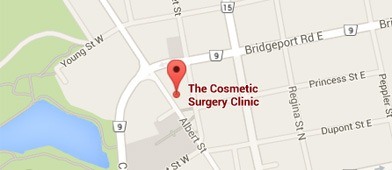 A breast lift—also known as a mastopexy—is a surgical procedure that improves the profile, position, and shape of sagging breasts, giving them a more youthful appearance without necessarily changing their size. Many women choose to have this surgery following pregnancy, breastfeeding, weight loss, or significant volume loss as a result of aging.
A breast lift—also known as a mastopexy—is a surgical procedure that improves the profile, position, and shape of sagging breasts, giving them a more youthful appearance without necessarily changing their size. Many women choose to have this surgery following pregnancy, breastfeeding, weight loss, or significant volume loss as a result of aging.
As with most cosmetic surgery procedures, there are many important factors to consider, from cost to recovery, and everything in between. Not surprisingly, one of the main hesitations our patients express when making their decision is breast lift scars.
Unfortunately, because the operation involves the removal of excess skin, and the repositioning or raising of the nipple and areola, it’s impossible to avoid breast lift scars altogether, but most patients believe the trade-off to be worthwhile. There are a number of important factors that can impact the appearance and prominence of the scars—including the initial degree of sagging and whether another procedure (like a breast augmentation or liposuction) is being performed simultaneously—but the biggest determining factor in breast lift scars is often the incision location.
Incision location & breast lift scars.
Your plastic surgeon will always use the shortest possible incisions, which will be closed using dissolving stitches that do not have to be removed. Depending on the amount of lift needed, there are different incision options available, each of which will produce different breast scars. Some of the most common incisions include:
The donut incision.
Also known as the circumareolar technique, the donut incision is circular, and made around the areola alone. This technique is minimally-invasive, and does avoid scarring outside of this area, but it can only achieve a small amount of lifting. The donut incision is often reserved for individuals with small breasts and minimal sagging.
The lollipop incision.
Also called the vertical technique, the lollipop incision extends around the areola and vertically down the breast towards the fold where the breast meets the chest. This technique can achieve a larger degree of lift. The lollipop incision can be used for individuals with larger breasts and moderate to severe breast sagging.
The anchor incision.
Also referred to as the inverted-t technique, this is both the most extensive, and most common incision option, achieving the greatest amount of lift. An anchor-shaped incision is created by circling the areola, descending vertically down the breast, and horizontally lining the crease of the breast. This is the incision used when more intensive lifting is required in individuals with larger breasts and severe sagging.
Your plastic surgeon will discuss the various options and approaches with you during your consultation, but no matter the choice you make, it’s important to remember that the scars will fade (but not disappear!) over time, leaving you to enjoy a lifetime of self-confidence.
If you’re interested in learning more about breast lifts, schedule a surgical consultation today.
